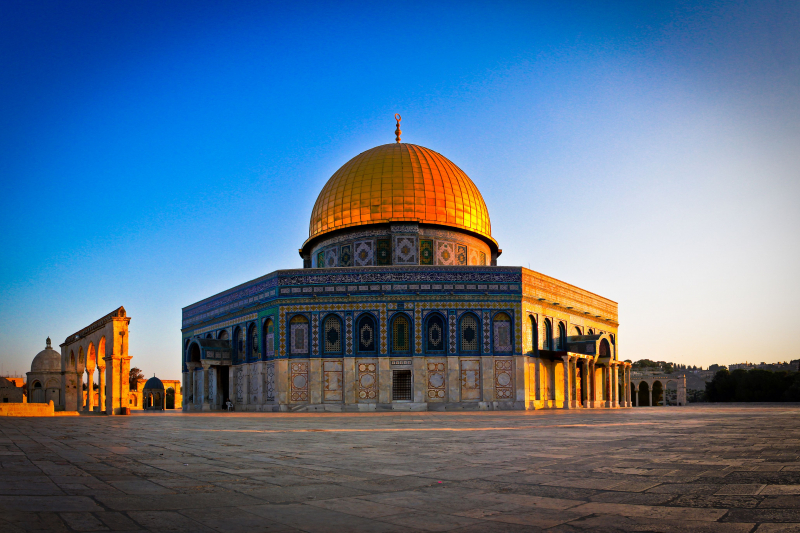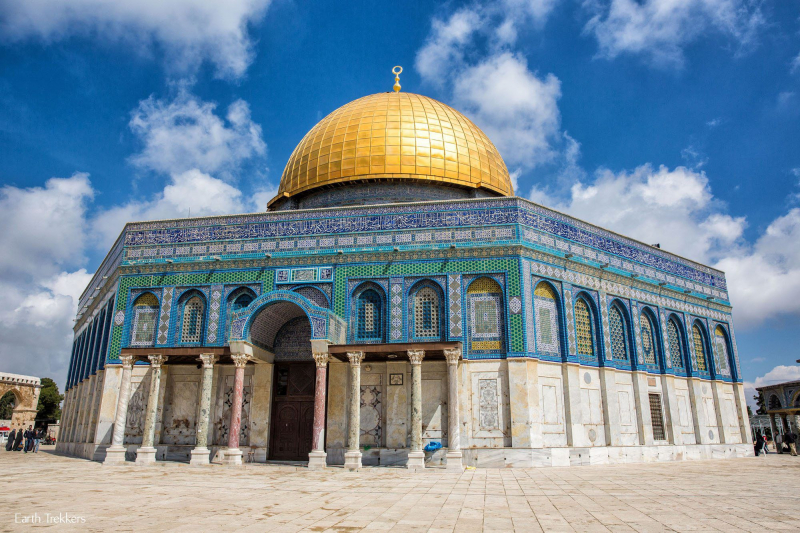Dome Of The Rock
The Dome of the Rock is an Islamic shrine that can be seen on the Temple Mount in Jerusalem's Old City. Muslims often refer to this location as the Al-Aqsa Compound or al-Haram al-Sharif. It was first erected on top of the location of the Second Jewish Temple (built in around 516 BCE to replace the demolished Solomon's Temple), which was destroyed by the Romans in 70 CE, by the Umayyad Caliphate on Abd al-orders Malik's during the Second Fitna in 691-692 CE. After collapsing in 1015, the old dome was restored in 1022–1023. The Dome of the Rock is the earliest surviving example of Islamic design in existence.
Although its exterior was extensively altered throughout the Ottoman time and again in the contemporary period, most notably with the addition of the gold-plated roof, in 1959–1961, and again in 1993, its architecture and mosaics were inspired by surrounding Byzantine churches and palaces. The Church of the Seat of Mary, also known as Kathisma in Greek and al-Qadismu in Arabic, which was constructed between 451 and 458 on the route between Jerusalem and Bethlehem, may have had an impact on the building's octagonal design.
As the spot where God created the world and the first person, Adam, the Foundation Stone (or Noble Rock) that the temple was constructed atop has immense significance in the Abrahamic religions. Jews look toward it during prayer because it is also said to be the location of Abraham's failed effort to sacrifice his son and the area where God's presence is most clearly felt than anywhere else. Muslims view this location as having tremendous significance because of legends linking it to the world's creation and the notion that Muhammad's Night Journey started from the rock at the center of the building.
Location: Old City of Jerusalem, Jerusalem

















